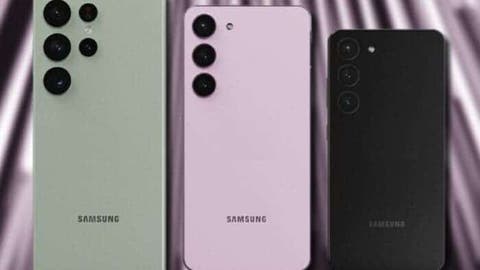As the Samsung Galaxy Unpacked 2023, set for February 1st, get closer, there are more and more reports regarding new models in the Samsung Galaxy S23 series, including rumors about a specific Qualcomm processor version that they would use.
Although the existence of a Snapdragon 8 Gen 2 chip has long been assumed to be present in every Samsung Galaxy S23 model, a recent rumor says that Samsung and Qualcomm may have worked together to produce a custom version of the chip. Additionally, some speculations claim that the new course taken may change a sort of Samsung tradition that involves using two distinct processors depending on the reference market. When it came to the South Korean market and other less interesting ones (including Europe), Samsung shifted to the Exynos rather than the Snapdragon, which was normally installed in the USA and other countries.
The Snapdragon 8 Gen 2 of the Galaxy S23 will be manufactured by Samsung rather than TSMC
A new rumor from 9to5Google further supports the notion that the next top-of-the-line handsets from the Korean manufacturer will exclusively include the Snapdragon 8 Gen 2. According to materials that the reporters claim to have seen, we will discover a “custom” version of the Qualcomm processor. This version, which appears to have been given the name “Qualcomm Snapdragon 8 Gen 2 Mobile Platform for Galaxy,” at least temporarily, is actually an overclocked version of the processor, with a clock speed that will go as high as 3.36GHz, where the “base” of the main X3 core stopped at 3.2 GHz.
Samsung Galaxy S23 and Galaxy S23+ rumored specifications
- 6.1-inch (S23) / 6.6-inch (S23+) (2340 x 1080 pixels) FHD+ Infinity-O Dynamic AMOLED 2X Display, 48-120Hz adaptive refresh rate, 240Hz Touch Sampling Rate in Game Mode, up to 1750 nits brightness, Gorilla Glass Victus 2 protection
- 3.36 Octa-Core Qualcomm Snapdragon 8 Gen 2 4nm Mobile Platform with Adreno 740 GPU
- 8GB LPDDR5X RAM with 128GB/256GB UFS 4.0 storage
- Android 13 with One UI 5.1
- Dual SIM (nano + nano)
- 50MP rear camera with LED Flash, f/1.8 aperture, OIS, 12MP 120° Ultra Wide sensor, f/2.2 aperture. 10MP Telephoto lens with f/2.4 aperture, 3x optical zoom, OIS, 4K 60 fps, 8K 30fps
- 12MP front camera with f/2.2 aperture
- Dust and Water resistant (IP68)
- S23 Dimensions: 146.3 x 70.9 x 7.6mm; Weight: 167g
- S23+ Dimensions: 157.8×76.2×7.6mm; Weight: 195g
- 5G SA/NSA, 4G VoLTE, Wi-Fi 6E, 802.11ax (2.4/5GHz), Bluetooth 5.3, UWB (S23+ only), GPS + GLONASS, USB 3.1, NFC
- 3900mAh (S23) / 4700mAh (S23+) battery with support for 25W (S23) / 45W (S23+) fast charging, Qi wireless charging, Wireless PowerShare
But the speculation around this processor doesn’t end there. Some publications claim that the “Qualcomm Snapdragon 8 Gen 2 Mobile Platform for Galaxy” will also feature a unique exception. In fact, it would appear that Qualcomm would have chosen to use Samsung-owned facilities for the fabrication of this specific chip, as it did for the Snapdragon 8 Gen 1 last year.
Samsung Galaxy S23 Ultra rumored specifications
- 6.8-inch (3088 x 1440 pixels) Quad HD+ Infinity-O-Edge Dynamic AMOLED Display. 1-120Hz refresh rate, 240Hz Touch Sampling Rate in Game Mode, up to 1750 nits brightness, Gorilla Glass Victus 2 protection
- 3.36GHz Octa-Core Qualcomm Snapdragon 8 Gen 2 4nm Mobile Platform with Adreno 740 GPU
- 8GB / 12GB LPDDR5X RAM with 256GB/512GB/1TB UFS 4.0 storage
- Android 13 with One UI 5.1
- 200MP rear camera with ISOCELL HP2 sensor, OIS, f/1.7 aperture. 12MP 120° Ultra Wide sensor with f/2.2 aperture. 10MP Telephoto lens for 3x zoom, f/2.4 aperture, OIS. 10MP Periscope lens for 10x zoom, f/4.9 aperture, 100x Space Zoom, Laser autofocus, 4K 60 fps, 8K 30fps, LED Flash
- 12MP front camera with f/2.2 aperture
- Dust and Water resistant (IP68)
- Dimensions: 163.4 x 78.1 x 8.9mm; Weight:233g
- 5G SA/NSA, 4G VoLTE, Wi-Fi 6E, Bluetooth 5.3, UWB, GPS + GLONASS, USB 3.1, NFC
- 5000mAh battery with 45W fast charging, Qi wireless charging
Two immediate effects would result from this: first, Samsung would have had more immediate and direct control over the chips, and second, this change would strongly encourage the two firms’ cooperation. And who knows, perhaps the first of future surprises will be a processor that has been overclocked.

